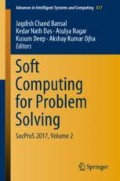Abstract
Ever-increasing use of wireless applications is exerting pressure on the limited, insufficient, and expensive licensed spectrum. Actually, because of allocation of fixed spectrum, more portion of spectrum is underutilized. Spectrum sensing can be used for the efficient and effective use of the radio spectrum. It detects the unused spectrum channels in cognitive radio network. In cognitive radio, spectrum sensing techniques such as energy detection, matched filter detection have been used. In this paper, receiver operating characteristics (ROC) of matched filter and energy detector are compared at −10 and −15 dB signal-to-noise Ratio (SNR) levels in fading wireless channels. From the results obtained it is found that matched filter system performed well over the ROC of energy detector at lower values of SNR.
Access this chapter
Tax calculation will be finalised at checkout
Purchases are for personal use only
References
Haykin, S.: Cognitive radio: brain-empowered wireless communications. IEEE J. Sel. Areas Commun. 23(2), 201–220 (2005)
Kay, S.M.: Fundamentals of Statistical Signal Processing, Estimation Theory, vol. I. Prentice hall (1993)
Kay, S.M.: Fundamentals of Statistical Signal Processing, Detection Theory, vol. I. Prentice hall (1998)
Van Trees, H.L.: Detection, Estimation, and Modulation theory. Wiley (2004)
Ali, A., Hamouda, W.: Spectrum monitoring using energy ratio algorithm for OFDM-based cognitive radio networks. IEEE Trans. Wirel. Commun. 14(4), 2257–2268 (2015)
Xuping, Z., Jianguo, P.: Energy-detection based spectrum sensing for cognitive radio, pp. 944–947 (2007)
Plata, D.M.M., Reátiga, Á.G.A.: Evaluation of energy detection for spectrum sensing based on the dynamic selection of detection-threshold. Procedia Eng 35(2012): 135–143
Ling, F.: Matched filter-bound for time-discrete multipath Rayleigh fading channels. IEEE Trans. Commun. 43(234), 710–713 (1995)
Xuping, Z., Jianguo, P.: Energy-detection based spectrum sensing for cognitive radio, pp. 944–947 (2007)
Ling, F.: Matched filter-bound for time-discrete multipath Rayleigh fading channels. IEEE Trans. Commun. 43(234), 710–713 (1995)
Author information
Authors and Affiliations
Corresponding author
Editor information
Editors and Affiliations
Rights and permissions
Copyright information
© 2019 Springer Nature Singapore Pte Ltd.
About this paper
Cite this paper
Dannana, S., Chapa, B.P., Rao, G.S. (2019). Spectrum Sensing for Fading Wireless Channel Using Matched Filter. In: Bansal, J., Das, K., Nagar, A., Deep, K., Ojha, A. (eds) Soft Computing for Problem Solving. Advances in Intelligent Systems and Computing, vol 817. Springer, Singapore. https://doi.org/10.1007/978-981-13-1595-4_27
Download citation
DOI: https://doi.org/10.1007/978-981-13-1595-4_27
Published:
Publisher Name: Springer, Singapore
Print ISBN: 978-981-13-1594-7
Online ISBN: 978-981-13-1595-4
eBook Packages: Intelligent Technologies and RoboticsIntelligent Technologies and Robotics (R0)

